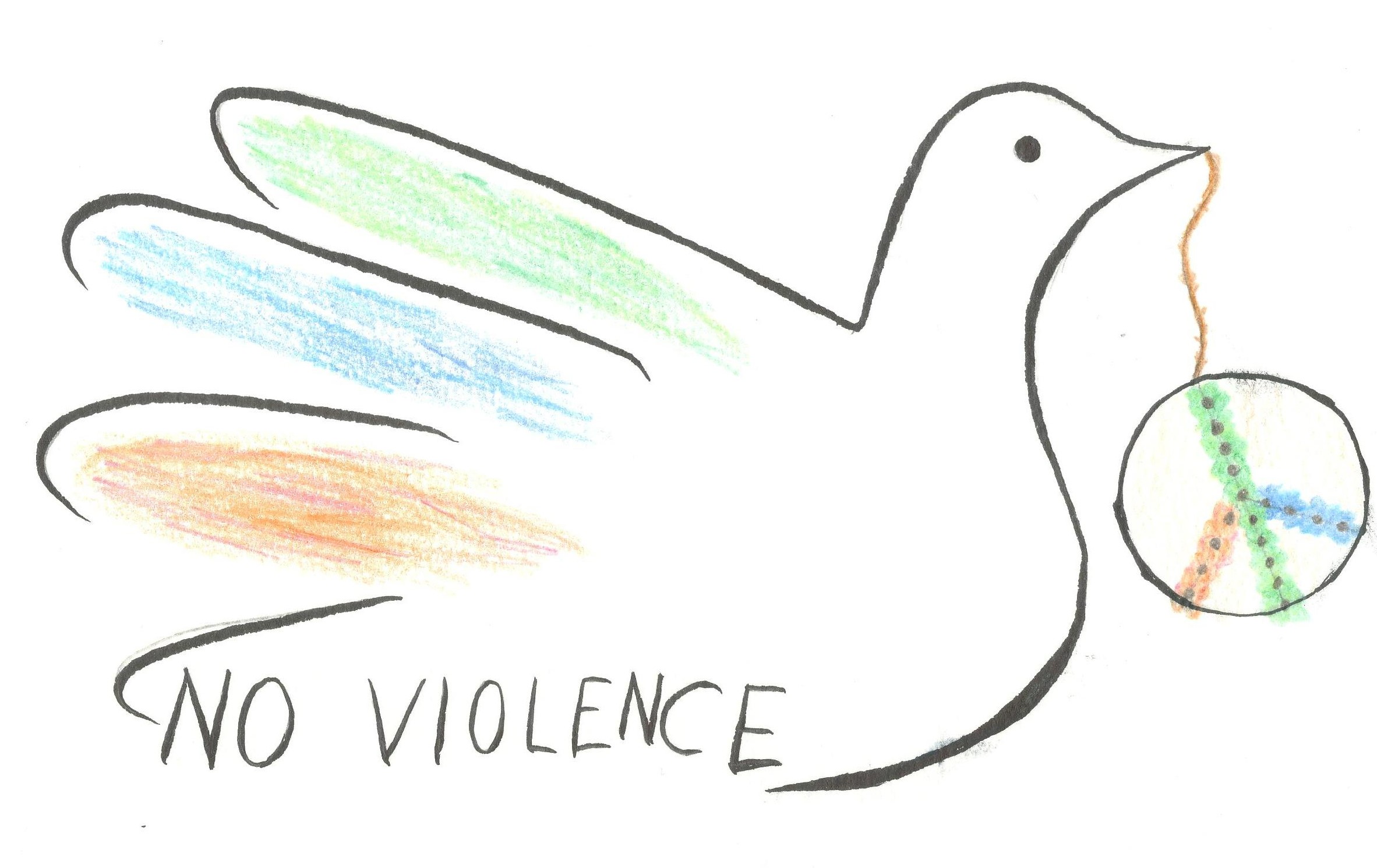Our School Has Love No Violence


Objectives
- Encouraging children to understand aggressive behavior and to seek help from their teacher or parents when necessary.
- To teach children how to deal with aggression with emotion and problem solving techniques.
- Teaching methods of coping with stress and fear
- Identification of common and specific difficulties with aggressive children.
- Sharing experiences, practices and methodologies among partners.
- To increase the professional development of teachers for effective intervention
Activities implemented during this project:
- Causes of aggression, coping methods and regulation of educational environments
- Coping with stress, anxiety and fears
- Solutions to prevent aggression and violence applied to students with special needs.
“By prioritizing love and non-violence in schools, we can create a safer, more inclusive, and supportive learning environment for all students.”
WORKING WITH OBSERVERS
Peer violence, especially if it is systematic and long-lasting, can damage also harms bystanders (peers), as has already been shown in the ripple model effect. Peer violence thus also has an impact on classroom dynamics and often on the educational institution as a...
DEFINITION OF PEER VIOLENCE
Peer violence is usually the intentional, repeated use of physical, psychological, sexual, material or online violence against another peer. When it is a single incident of violent behaviour and there is a marked difference in physical or psychological power between...
WORKING WITH THE CAUSATIVE AGENT
The counsellor must also talk to the perpetrator and plan activities. Working with the perpetrator is the only way to get them to change their inappropriate behaviours. Important elements of a counselling discussion with the perpetrator are: - the aim of the...
THE TEAM
A process intervention involves a team of experts of school staff whose tasks are precisely defined according to their competences. All of the following educational professionals are involved in a team convened by the counsellor or the head/assistant head. The...
PROCESS INTERVENTION
The subsequent follow-up involves the educational establishment's professional staff, according to their competences and skills. However, the key role is played by the school counselling service, which is professionally competent to advise, discuss and plan a course...
IMMEDIATE INTERVENTION
Every employee of an educational establishment, who has perceived violence shall take immediate action to stop the violence the violence and protect the victim. Violence is interrupted by: - separating the children involved, - calling for appropriate help, if...
COOPERATION WITH OTHER AUTHORITIES
Peer violence may also include behaviour that fits descriptions of criminal offences (Criminal Code) or have the characteristics of misdemeanours under the laws defining offences. In that case reporting to the police under criminal and misdemeanour legislation is...
PEER VIOLENCE MANAGEMENT SCHEME
Immediate intervention Immediate cessation of violence and protection of the victim of violence (every employee) Process intervention Working with the victim (according to the competences of the professional) Working with the perpetrator Working with the class...
HANDLING PERCEIVED PEER-ON-PEER VIOLENCE
Perception of violence Perceptions of violence depend mainly on the educators' sensitivity to peer violence. This means that educators: - have to be observant, they have to notice what's happening - have to listen and hear - recognise a cry for help - recognise forms...
PREVENTION ACTIVITIES IN THE FIELD OF PEER VIOLENCE
Prevention activities focus on identifying and responding to violence, its causes for choosing violence in interpersonal relationships, learning behaviours that prevent violence, and the factors risk factors for violence. PREVENTING PEER VIOLENCE IN EDUCATIONAL...
PROMPT AND PROFESSIONAL HANDLING OF PERCEIVED VIOLENCE IS THE BEST PROTECTION AGAINST A RECURRENCE.
When deciding on a form of violence prevention in education we must first define the path and steps to take to address it. Effective and professional treatment of the violent act committed is the best The messages that the management of the educational establishment...
PRINCIPLES FOR DEALING WITH PEER VIOLENCE
Zero tolerance of violence. We believe the victim. Individual experience of violence: we don't judge violence by your own feelings and experiences. Violent behaviour is a choice. The perpetrator is responsible for the violence. We do not minimise violence. We make no...
WHAT ARE EXAMPLES OF HEALTHY COPING SKILLS FOR CHILDREN?
Learning how to manage stress and deal with life’s ups and downs is a process that continues throughout our entire lives. You can find a number of tips on the following strategies on this website:...
CHILD AT RISK FROM PEER VIOLENCE
A child is at risk when they are at risk of harm as a result of a particular violent or prolonged, deliberate violence by peers, his or her dignity and physical or sexual integrity are violated. Threats are emotional, physical, material or sexual. The child feels...
DIFFERENT BEHAVIOURS OF CHILDREN WHO CAUSE PEER VIOLENCE
- The most noticeable trait is aggressiveness. - They are often violent towards adults (parents, teacher/carer). - He is characterised by impulsivity and a strong need to control others. - Has positive attitudes towards violence. - Cannot empathise with others. - Has...
THE MOST COMMON SIGNS AND BEHAVIOURS IN VICTIMS OF VICTIMS OF PEER VIOLENCE
Changes in the relationship attitudes towards school, academic performance, the child's involvement The child: - cries in the evening, complains of pain, refuses to go to school, expresses fear and anxiety - is afraid to come to or leave school - starts to miss school...
VIOLENCE AGAINST CHILDREN BELONGING TO VULNERABLE GROUPS
Different forms of violence are more likely to happen to children belonging to vulnerable groups vulnerable groups. Social inequality and social weakness of the group to which the child belongs can affect the child's situation and social inclusion, personal...
FORMS OF PEER VIOLENCE
Peer violence can take many forms. It is impossible for all to cover in typologies of peer violence. Here is the list of the most common ones and most current forms: PHYSICAL VIOLENCE biting, kicking, pushing, shoving, hair pulling, spitting, scratching, boxing,...
VICTIMS, PERPETRATORS, BYSTANDERS …
A child is a victim of peer violence if he or she has been exposed to aggressive behaviour and abuse of power by a peer or group of peers over a long period of time. Violence causes a number of consequences for the child, as it gradually begins to have a destructive...
ROLES IN VIOLENCE
In the process of peer violence, specific dynamics are formed between in which victims, perpetrators and bystanders all have their own roles to play, and there is a kind of interdependent relationship between them. Without external adult intervention, it is usually...
RIPPLE EFFECT MODEL
Sullivan, 2011 Violent event Victim does not feel safe Family, parents Anger and empathy with the victim Observers at school Discomfort Others at school Hear about the event, do not feel safe Wider community ...
INTERACTIONS BETWEEN PEERS
Interactions between peers in an educational establishment are manifold - ranging from cooperative and friendly to conflictual or even violent. The dynamics in peer communication are usually changing and often moving from one form of interaction to another. When peer...
COPING SKILLS FOR SCHOOL. WHO COULD BENEFIT FROM COPING SKILLS?
While all children and teens could benefit, there are some kids who need more support and help to learn coping skills. Here are some of the settings where we can introduce coping skills: to individual students who needs more support (for example: in individual...




